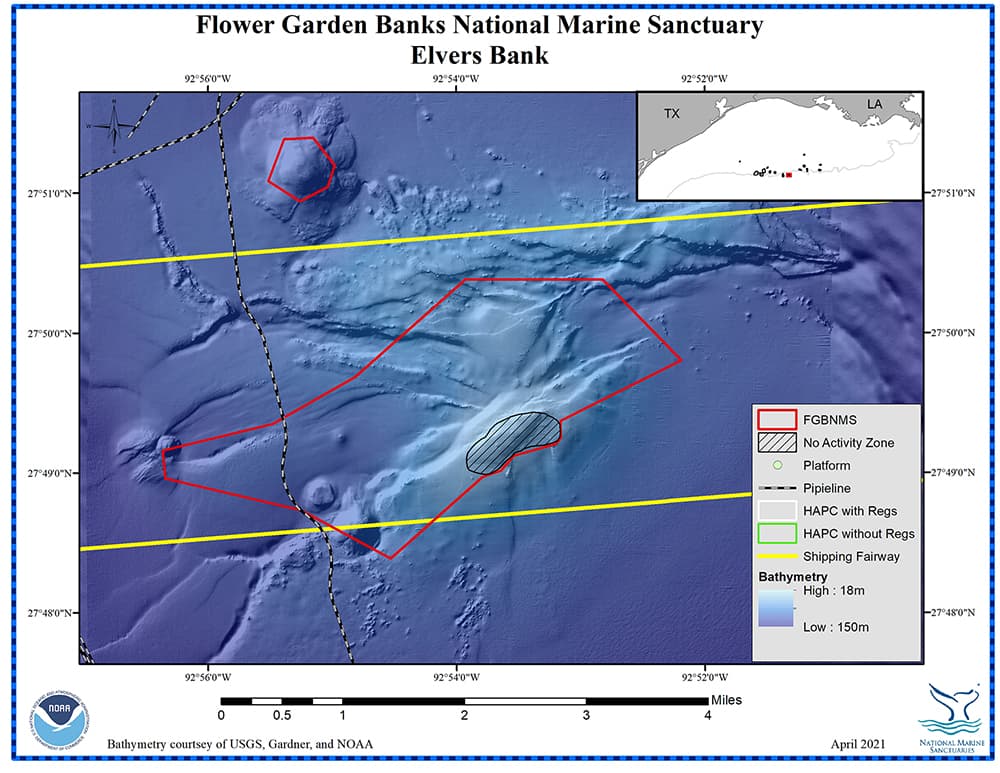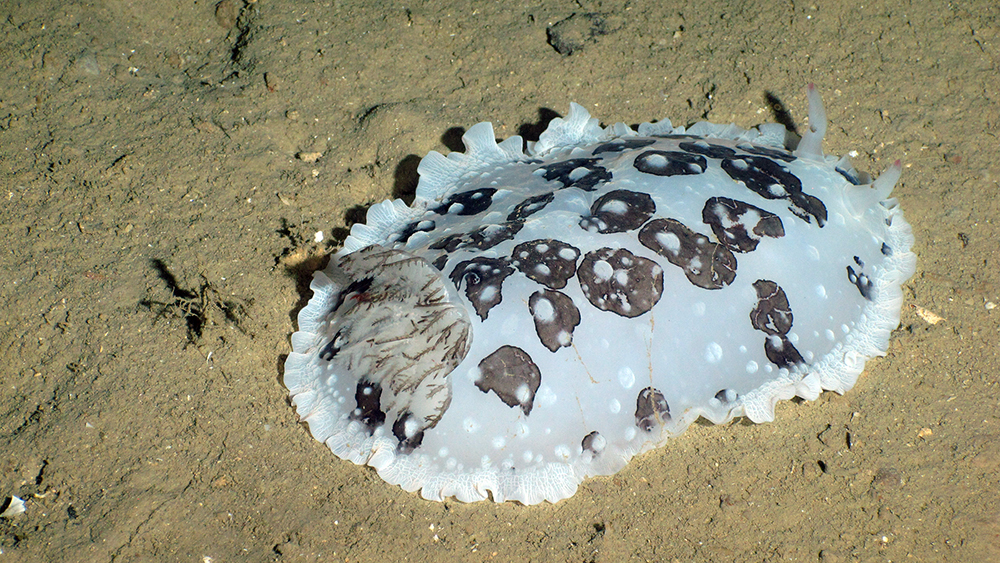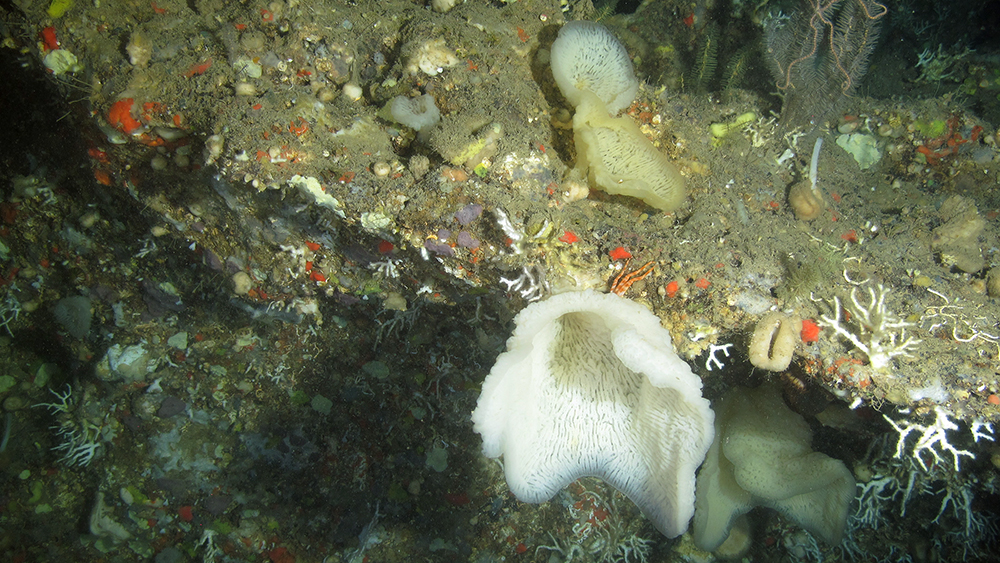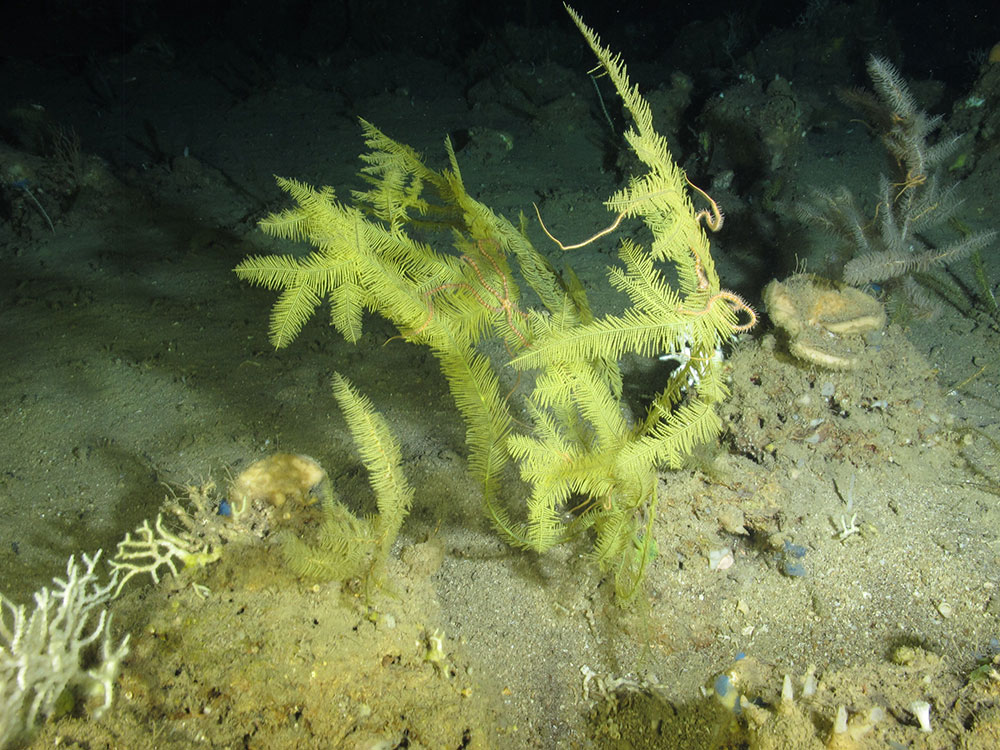Elvers Bank

Depth Range: 217-682 feet (66-208 meters)
Distance from Land: 121 miles (195 km)
Area: 4.6 square miles (11.9 sq km)
Elvers Bank sits at the very edge of the continental shelf and harbors a variety of habitats. It was named after Douglas J. Elvers, a geophysicist for the Minerals Management Service (now BOEM).
This site includes mesophotic habitat dominated by black corals, octocorals, fish, sponges, algae, and invertebrates.

It also includes an algal nodule field dominated by a small orange/red sponge, which provides habitat for at least one dwarf frogfish – a species rarely seen in this part of the Gulf.

Interesting fields of sea pens and yellow stalked crinoids have been documented here, as well as outcroppings covered in glass sponges, which are rare throughout the region.

In 2020, a black coral specimen that was collected from Elvers Bank in 2017 was confirmed as a new species. Although the specimen was collected outside of what is now the sanctuary boundary at Elvers Bank, it's likely that additional specimens of this coral will also be found inside sanctuary boundaries.

Who is Douglas Elvers?
Douglas J. Elvers was involved in the mapping of coastal resources for the Bureau of Land Management/Minerals Management Service (now BOEM) in the 1970s. Elvers Peak in Antarctica is also named for him, as a result of surveying work he did there for the U.S. Geodetic Survey in 1966.

